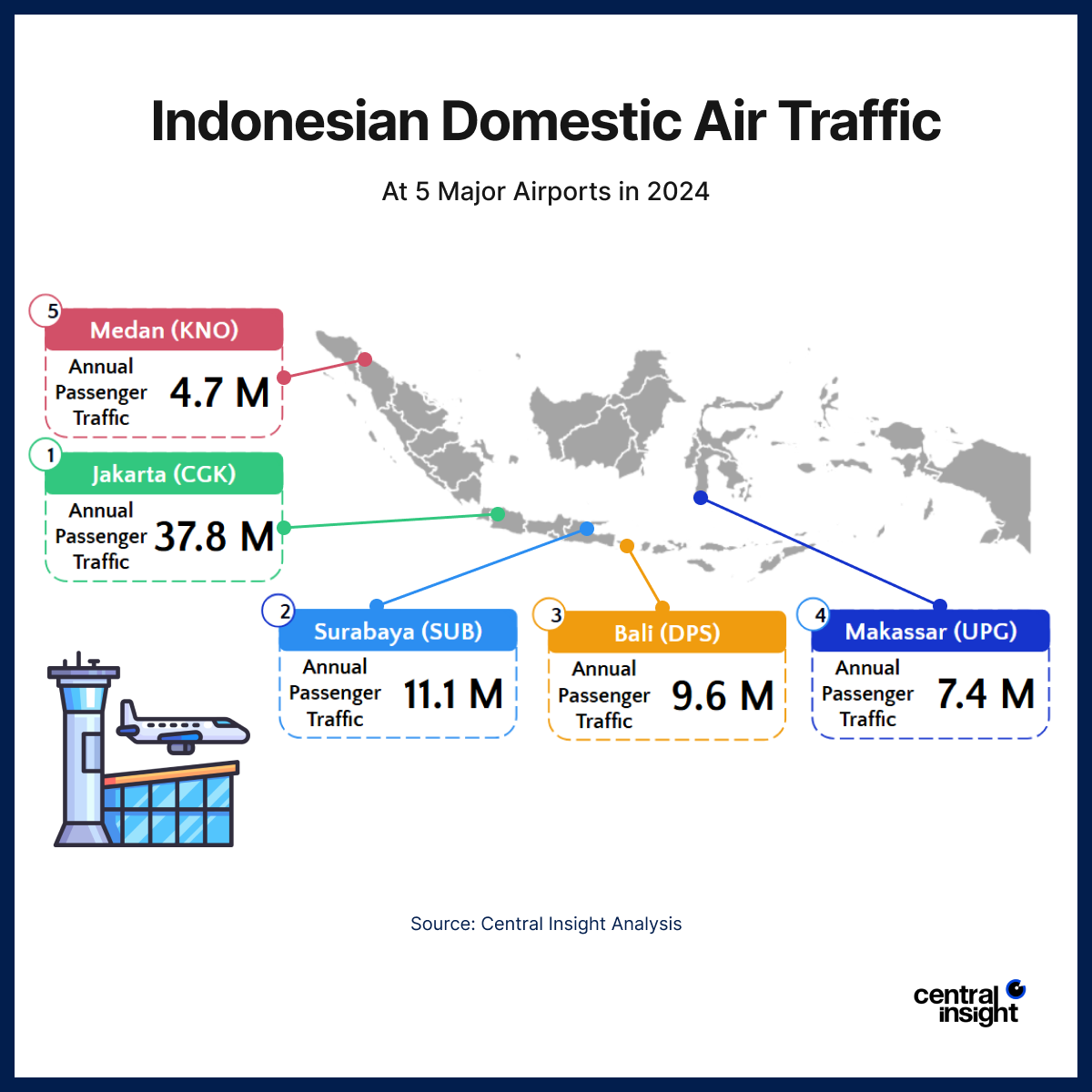In 2024, Indonesia’s five major domestic airports together handled 70.6 million passengers, reflecting strong and stable demand across the year. With a monthly average of 5.9 million passengers, domestic air travel proved resilient, adapting to both seasonal peaks and cultural rhythms.
Greater Jakarta: A Hub of Economic Activity

In Indonesia’s vast and complex aviation network, one airport stands out as the unrivaled hub of domestic air travel: Soekarno-Hatta International Airport (CGK) in Jakarta. In 2024, CGK handled 37.8 million domestic passengers, accounting for a staggering 29% of the country’s total domestic air traffic across just five major airports.
This dominance is driven by the Greater Jakarta Area’s massive population, extensive economic activity, and strategic geographic position. As Indonesia’s capital, Jakarta acts as the administrative, business, and cultural center of the country. CGK serves as the primary gateway to Java’s economic corridors and as a vital link to the outer islands.
Read Also: The Demographic Bonus: Why Reducing NEET Matters
Moreover, CGK’s robust network of routes offers connections to almost every corner of the archipelago. Whether heading to Sumatra, Kalimantan, Sulawesi, or Papua, most flights pass through Jakarta at some stage. Despite only recording 491,000 transfer passengers, CGK remains a preferred origin or destination due to its direct connectivity.
The airport’s infrastructure continues to improve, with terminal expansions and technological upgrades enhancing its efficiency and passenger experience. As demand grows, CGK’s importance will likely rise further, underscoring its role as the beating heart of Indonesia’s domestic aviation.








